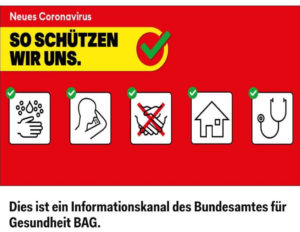Infection Prevention and Control for the safe management of a dead body in the context of COVID-19
World Health Organization Interim Guidance
WHO data not update since March 24, 2020
Our internal review of the latest guidance from WHO, while interesting within the context of the current pandemic, does not provide very much new information about how to keep our personnel safe.
Observations after one year.
One reference that stood out in the beginning suggested that some coronavirus can persist on some surfaces for up to 9 days. After a year of experiencing the pandemic, it appears that the total viral load is important whether a person becomes ill or not. It is doubtful that a substantial viral load can be introduced into the respiratory tract from picking ones nose!
Nevertheless good hygiene and frequent hand washing combined with good discipline about not touching ones face are prudent.
Funeral service workers can safely remove COVID-19 patients from the place of death and transport to the funeral establishment for mortuary procedures using the standard infection control measures and personal protective gear. Early shortages of equipment (PPE) have largely been overcome.
Often we may not know the cause of death or records of the decedent’s medical history, so at the time of removal we have to meticulously observe standard precautions. (Hand washing, gloves, glasses or protective eye-wear, long sleeves, not touching face, proper removal and disposal of gloves)
CJD
Each pathogen or disease has unique properties that require special considerations is some regards. Creutzfeldt-Jakob Disease was one such disease. We quickly learned to use totally disposable equipment that could be burned. That was 1993 when the first reported case of mad cow disease in North America came in from Alberta, Canada.
Do you remember Creutzfeldt-Jakob Disease, Classic (CJD)? The CDC Guidelines for Funeral Directors are HERE
HIV/AIDS
HIV/AIDS did not cause much concern among funeral service personnel after the mode of transmission was well understood. Medical and dental practitioners who came into contact with body fluids from live patients faced a steeper learning curve but that too was quickly overcome.
A not uncommon problem with HIV/AIDS did not relate to universal precautions. Unfortunately, the funeral industry was a bit slow to comply with anti-discrimination laws required for the handling of persons who died of illnesses related to HIV. This paper from 1994 details some of those concerns: HERE.
The Challenge with COVID-19
We highlighted several previous serious epidemics to demonstrate how COVID-19 is different. CJD and AIDs are almost impossible to cause a problem for our removal personnel. And they present no problem to funeral directors making arrangements and comforting families.
COVID-19 is different in that it is contagious and has substantial morbidity.
It is not particularly dangerous to remove a victim of the coronavirus but it is dangerous to be out in public among people who may be shedding the virus. We do not know who they are. The lock-downs taking place to slow the spread are unprecedented since the 1918 flu pandemic.
We have a duty to protect both the families we serve, our funeral directors and mortuary personnel. Providing good quality personal protection equipment takes care of mortuary and removal staff while they are performing their tasks. Because they are well trained and know the dangers, we believe they are in a better position than the average citizen to avoid acquiring the virus .
 Social Distancing
Social Distancing
So-called social distancing has helped a lot to slow the spread of the virus. We do not know who coined the term “social distancing” It seems to be a very correct term in our time of “social correctness.” It is nothing new.
In the 1940s when families had measles, scarlet fever, whooping cough and a few others, the whole family was quarantined. If they were unfortunate enough to be quarantined on Halloween, they invariably suffered “tricks” in spite of an official quarantine sign on the front door.
United States Code: Sanitation and Quarantine, 42 U.S.C. §§ 81-111 (Suppl. 5 1940).
“And any person who shall willfully violate any rule or regulation so made and promulgated shall be deemed guilty of a misdemeanor, and upon conviction shall be punished by a fine of not more than five hundred dollars, or imprisonment for not more than two years,or both, in the discretion of the court.”
42 U.S. Code CHAPTER 2—Sanitation and Quarantine — Sections 81-111 have all been repealed but the language of the law showed that they took social distancing very seriously in a time when medicine may not have been so modern, although everyone in the 1940s thought of themselves as Modern!
Now Modern Medicine is not yet helping very much with the pandemic so tactics that worked in the middle ages are working once again to buy us enough time for Modern Medicine to kick in.
When the pandemic started, our Swiss friends quickly plastered these signs all over Switzerland.
Then they discovered something NEW!
It’s in the Bible
What has been will be again,
what has been done will be done again;
there is nothing new under the sun.
Ecclesiastes 1:9







